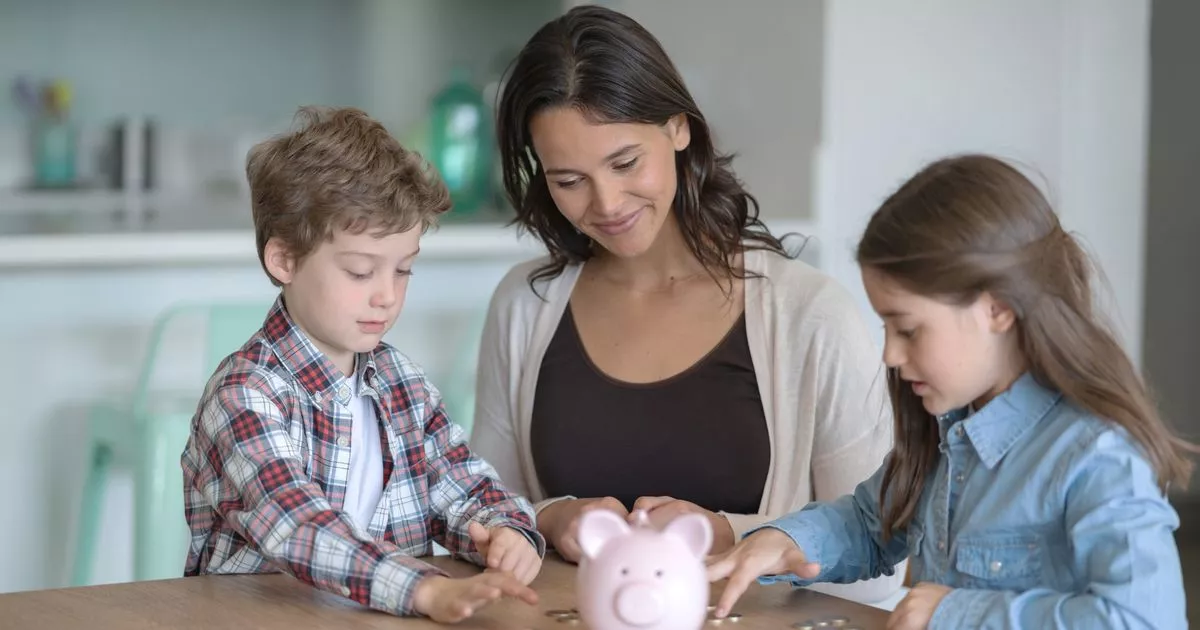HMRC Child Benefit: Responding To Official Communications

Table of Contents
Identifying Legitimate HMRC Communication
It's vital to ensure any communication you receive is genuinely from HMRC. Scammers frequently attempt to obtain personal information through phishing emails and letters designed to mimic official HMRC correspondence.
Spotting Phishing Scams
Phishing attempts can be sophisticated, but several key indicators can help you identify fraudulent communications:
- Check the sender's email address carefully: Legitimate HMRC emails will use a government email address, not a generic or free email service.
- Look for grammatical errors and poor formatting: Official HMRC communications are professionally produced and will be free from spelling and grammatical mistakes.
- Be wary of urgent requests for personal information: HMRC will never request sensitive information like your full banking details, password, or NI number via email or unsolicited phone calls.
- Never click on suspicious links: If you're unsure about a link's legitimacy, do not click on it. Instead, navigate directly to the official HMRC website.
Always verify the communication through official HMRC channels. Visit the official GOV.UK website and use their contact details to confirm the authenticity of the communication. Never respond to suspicious emails or letters directly.
Understanding Different Types of HMRC Correspondence
HMRC may contact you for various reasons related to your Child Benefit claim. Recognizing the type of correspondence helps you understand the required action.
- Letters requesting information: These often require additional documentation to support your claim or address discrepancies in your information. You may be asked to provide updated bank details, proof of address, or information about the child's circumstances.
- Letters regarding changes to your claim: HMRC might notify you of changes to your payment amount, eligibility criteria, or any adjustments required.
- Letters about overpayments or underpayments: These letters detail any discrepancies in payments and explain the next steps, whether repayment is required or an additional payment is due.
Carefully reading the entire communication and understanding the requested action is critical to ensure a timely and accurate response.
Responding to HMRC Child Benefit Queries
Responding promptly and accurately to HMRC communications is essential for maintaining your Child Benefit payments.
Gathering Necessary Documents
Before responding, gather all necessary documentation to support your reply. This will expedite the process and prevent delays. Essential documents may include:
- National Insurance number: This is crucial for identifying your claim.
- Bank details: Ensure your bank details are up-to-date and accurate.
- Child's birth certificate: This is required to verify the child's identity and eligibility for Child Benefit.
- Proof of address: This might be requested to verify your residency.
Organize your documents before responding to avoid delays and ensure you provide accurate information.
Methods of Response
HMRC offers various ways to respond to their communications:
- Online portal: This is often the quickest and most efficient method, allowing you to securely update your details and respond to queries.
- Post: You can respond via post using the address provided in the letter. Ensure you retain a copy of your response.
- Phone: While you can contact HMRC by phone, it's generally advisable to respond in writing for record-keeping purposes.
The preferred method of response will typically be specified in the HMRC communication. Always follow their instructions.
Writing an Effective Response
When composing your reply, ensure it's clear, concise, and professional:
- Include your reference number: This helps HMRC quickly identify your claim.
- Clearly address each point raised: Don't leave any questions unanswered.
- Keep language polite and professional: Maintain a respectful tone throughout your communication.
- Keep a copy of your response: This serves as proof of your reply in case of any future discrepancies.
Sample Response Template:
Dear HMRC,
Reference Number: [Your Reference Number]
This letter is in response to your communication dated [Date of Communication].
[Clearly address each point raised in the communication, providing all necessary information and documentation]
Sincerely,
[Your Name] [Your Address] [Your Phone Number]
Following Up on Your Response
After sending your response, it's crucial to monitor its progress.
Tracking Your Response
If you responded through the online portal, you may be able to track the status of your response directly. Check your online account for updates.
Dealing with Delays
If you haven't received a response within a reasonable timeframe (usually a few weeks), contact HMRC directly using their official contact details.
- Contact HMRC directly: Use their official website or phone number to inquire about the status of your response.
- Keep records of all communication: This is important for future reference if any further issues arise.
Successfully navigating HMRC Child Benefit correspondence requires prompt and accurate responses. By following the guidelines outlined in this article, you can confidently handle any official communication regarding your Child Benefit payments. Remember to always verify the legitimacy of any communication before responding and keep records of all your interactions. If you have any doubts or face difficulties, contact HMRC directly for assistance. Learn more about managing your HMRC Child Benefit claim and understanding your responsibilities. Don't hesitate to seek further guidance on HMRC Child Benefit procedures.

Featured Posts
-
 Us Australia Military Exercise Missile Launcher Test Sparks Tensions With China
May 20, 2025
Us Australia Military Exercise Missile Launcher Test Sparks Tensions With China
May 20, 2025 -
 Meurtre D Aramburu La Fuite Continue Pour Les Suspects D Extreme Droite
May 20, 2025
Meurtre D Aramburu La Fuite Continue Pour Les Suspects D Extreme Droite
May 20, 2025 -
 Manchester Uniteds Fa Cup Victory Rashfords Brace Sinks Aston Villa
May 20, 2025
Manchester Uniteds Fa Cup Victory Rashfords Brace Sinks Aston Villa
May 20, 2025 -
 Manchester Uniteds 62 5m Bid For Arsenal And Chelsea Target
May 20, 2025
Manchester Uniteds 62 5m Bid For Arsenal And Chelsea Target
May 20, 2025 -
 Ex Munster Prop James Cronin Appointed Highfield Head Coach
May 20, 2025
Ex Munster Prop James Cronin Appointed Highfield Head Coach
May 20, 2025
